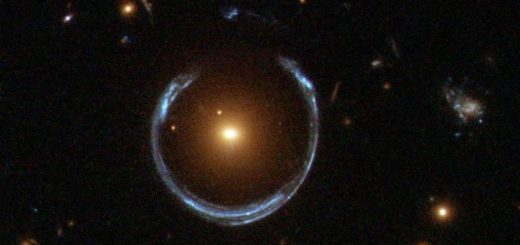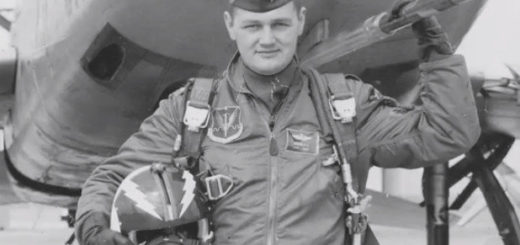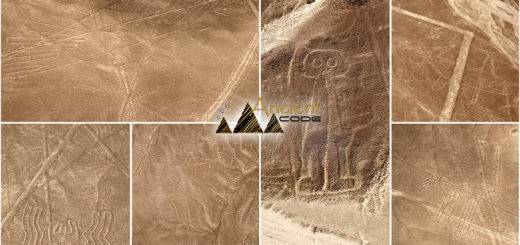The Kinross Incident: RSR UFO Files

On November 23, 1953, one of the strangest UFO incidents on record took place when an F-89C Scorpion all-weather interceptor was dispatched at Kinross AFB after radar scanned a UFO over the Soo Locks.
Aboard the jet were two crewmembers; pilot Lt. Felix Moncla and Lt. R.R Wilson, the radar observer. Guided by Ground Control Intercept radar station, Moncla pursued the object which was moving at 500 miles per hour out over Lake Superior. The first report from Moncla indicated “No Joy” (No contact). On the scope he was closing in on the bogey.
As he got closer he announced (slight static) “I have an eyeball on the target, am going in for a closer look.” (More static). Each time he transmitted the static became stronger, his transmissions increasingly unintelligible.
Minutes into the pursuit one of the Ground Control Intercept observers was alarmed to note that the F-89 Scorpion and the UFO had seemingly come into contact, observed on the radar scope as becoming a single blip. As the aircraft converged with the target, there came steadier and louder static each time the pilot transmitted until they merged.
Then all was silent. Moments later, the blip vanished from the radar screen altogether.
The belief was that Moncla and Wilson had met their demise and that their F-89 Scorpion interceptor had collided with “object unknown” and crashed into the torrential icy waters of Lake Superior.
Search and rescue was immediately dispatched. Low flying U.S. and Canadian planes searched the vicinity of the supposed crash area using flares. By morning a score of boats scoured the area as overhead pilots crisscrossed the lake for 100 miles, all to no avail. An exhaustive search effort turned up no wreckage, no life jackets and no oil slick. Nothing was ever found.
Truax AFB gave the Associated Press this official release: ““The plane was followed by radar until it merged with an object 70 miles off Keweenaw Point in upper Michigan.”
In view of Air Force secrecy this was a surprising admission. The statement appeared in an early edition of the Chicago Tribune, headed JET, TWO ABOARD, VANISHES OVER LAKE SUPERIOR.
Shortly after that release Air Force Headquarters retracted the story, denying that they had lost an F-89 Scorpion interceptor, that there had been any mid-air collision and that the GCI observer had misread the scope.
The Air Force speculated that Lt. Moncla had been stricken with vertigo, lost his sense of direction while flying too low and crashed into the lake. Canadian officials denied that there were any flights over Lake Superior and that no flights, civilian or otherwise were scheduled or monitored in the hours before or during the period of the chase.
The Air Force sent two officers to the families of the lost airmen to extend official messages of sympathy. According to a relative of Lt. Felix Moncla, the official AF explanation for the cause of death is disturbingly unclear.
Explaining the accident, the AF representative told Moncla’s widow that the pilot had flown too low while identifying the supposed Canadian airliner and had crashed in the lake.
By some AF Headquarters oversight, a second officer was later sent to offer condolences to the Moncla family. When Moncla’s widow asked if her husband’s body might be recovered the officer said there was no chance the jet had exploded at a high altitude, destroying the plane and its occupants.
When contacted by NICAP (National Investigations Committee on Aerial Phenomena), the RCAF (Royal Canadian Air Force) denies they had any such plane intercepted by the USAF (United States Air Force).



 Creators of mankind
Creators of mankind Description of “Tall white aliens”
Description of “Tall white aliens” Where they came from?
Where they came from? About hostile civilizations
About hostile civilizations The war for the Earth
The war for the Earth “Tall white aliens” about eternal life
“Tall white aliens” about eternal life Video: “Nordic aliens”
Video: “Nordic aliens” Aliens
Aliens Alien encounters
Alien encounters The aliens base
The aliens base UFO
UFO Technology UFO
Technology UFO Underground civilization
Underground civilization Ancient alien artifacts
Ancient alien artifacts Military and UFO
Military and UFO Mysteries and hypotheses
Mysteries and hypotheses Scientific facts
Scientific facts


















